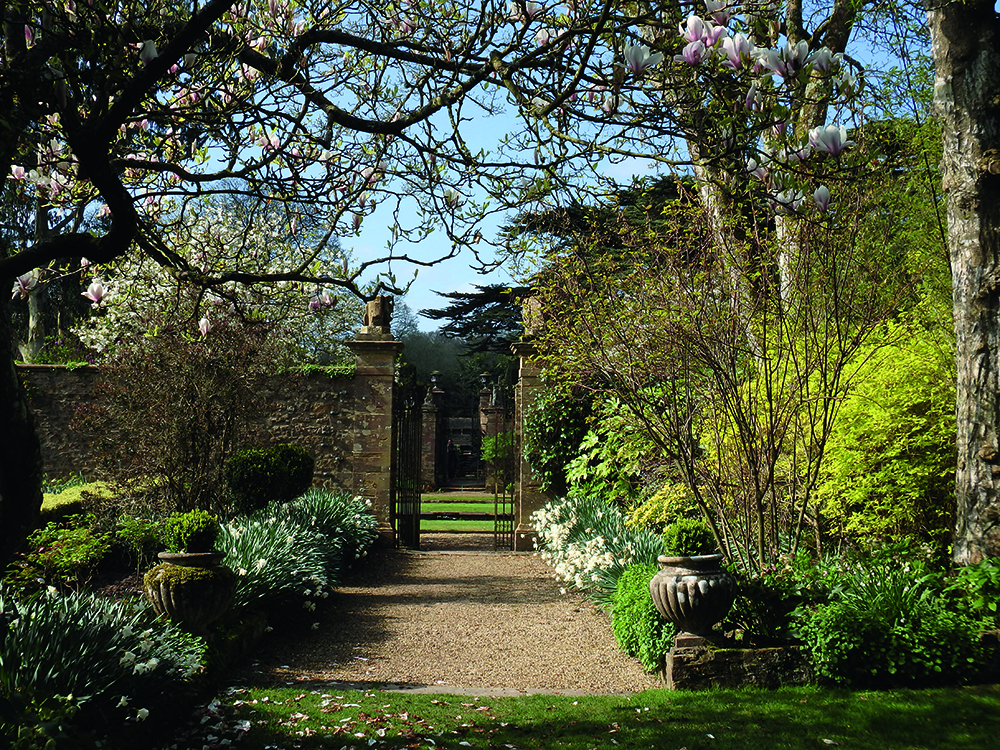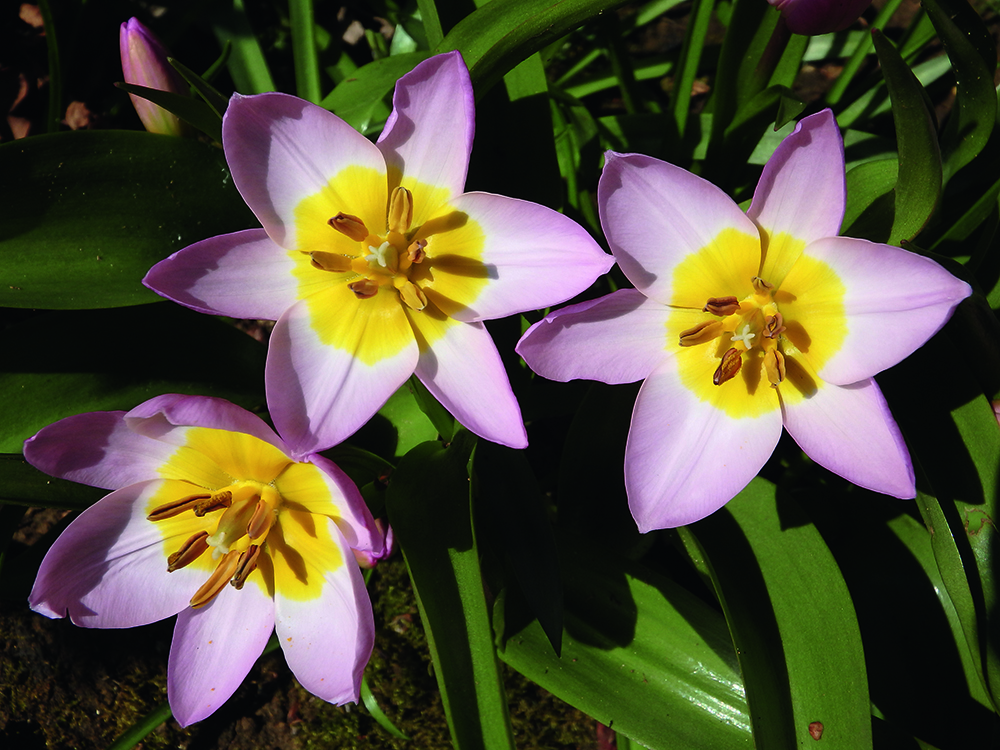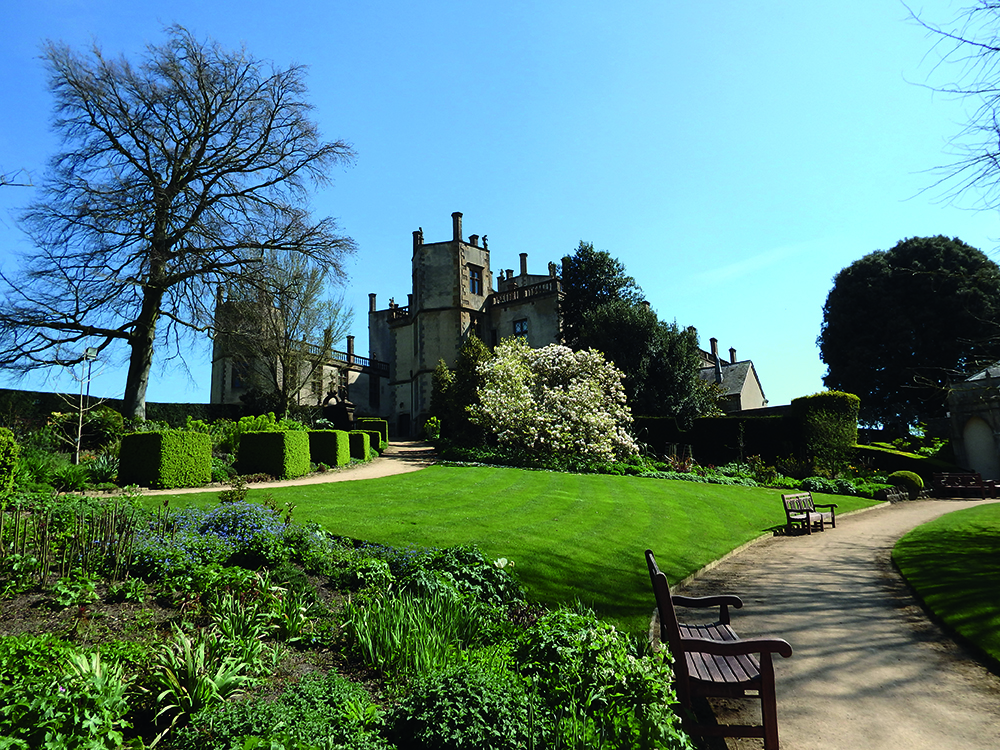Motorhome travel: The gardens of Dorset in spring
Motorhomer Mary-Jane Houlton explores the lush gardens of Dorset and delights in the arrival of spring...
We all long for the arrival of spring. After the bleak greys and browns of winter with so little colour and sunshine, watching for those first snowdrops and daffodils almost becomes a national pastime. The colour that we most closely associate with this time of year has to be green and it always seems to me that spring has its very own shade of green, incredibly lush and vivid, fresh and full of promise.
Our first garden tour of the year takes place down on the south coast in Dorset. This area of the country has a moderate climate, often escaping the brunt of the harsher weather that hits those of us who live further north. In a good year, spring comes early and stays late, which makes this an excellent choice for exploring a selection of the county’s best gardens. We based ourselves at Ashton Farm, a Camping and Caravanning Club CS site just outside Dorchester, and the gardens we visited radiate out from that centre.
This is a charming little campsite, with well spaced pitches tucked away in a field full of birdsong and with pleasant walks up on to the adjoining hills direct from the site. It was very reasonably priced at £11 a night including electricity, and there is some hardstanding. We had it almost to ourselves, but in holiday season it is understandably very popular so advance booking would be advised. There are no toilets or showers. If you would prefer to have full facilities you could try the Moreton Camping and Caravanning Club site, also near Dorchester; we have not stayed here and so cannot give any personal feedback.
Whilst we always associate spring with the familiar and much-loved displays of daffodils and snowdrops, there is much more to see if you know where to look. The four gardens that we visit on this tour vary in scale and in style, from formal, sculpted gardens to natural woodlands.They also vary in their design and planting schemes, with collections from all over the world to our own familiar native species. There is one element that ties all these gardens together, though, and that’s the fact that they have all been here for centuries.
Of course, they develop and grow, and no year is the same as the last one, but many of these trees and plants were here before any of us were born and will still be here, hopefully, long after we are gone. I can’t begin to imagine how many man – and woman – hours have gone into a garden that has been here since the 1600s. Now we live in an age when everything is about the quick fix, looking for the perfect ‘instant’ garden. As I walked around these lovely gardens, I realised that the joy of them is not just in their colour and their beauty but also in their history, all those years, all those seasons, until they finally become what we are lucky enough to see today...
Athelhampton House and Gardens
Athelhampton, situated just a few miles east of Dorchester, is a formal, highly sculpted masterpiece of a garden made up of four different ‘courts’ or outdoor rooms. The most famous of these is the Great Court, where a series of yew trees have been painstakingly clipped and shaped over the last hundred years to form 12 giant pyramids, each over 30 feet high.
If gardens were ever to win prizes for the number of benches and seats then Athelhampton would get first prize – I have never visited a garden with so many places to sit and admire the views! There were even benches hidden away inside two of the giant pyramids. With each bench I sat upon, I began to realise how much thought, planning and skill had gone into these lovely garden rooms. Leading you from room to room are avenues, some lined with massed planting of daffodils, others with pollarded limes that would have taken years to train into their delicate arches.
Water is also an important feature throughout the gardens. Fountains and pools provide a focus point and miniature canals have been artfully designed so that they mirror reflections of the house and surrounding trees. Each room has a very different feel, another good reason for sitting down on a bench! One of the courts held a collection of magnolias, in full bloom thanks to a largely frost-free couple of weeks and the fragrance from the magnolia stellata as you walked in was a real delight. Gardens should be a feast for all the senses, but these days it seems harder to find a garden that has been planted for our noses, as well as our eyes. The kitchen garden, built before the first world war, is currently being restored. Work only began here in 2014, so it is very early days. There is not much to see yet, but it will be fascinating to follow its progress.
The house nestles softly in the middle of these outdoor rooms, mellow in the bright spring sunshine. This garden, without doubt, would be beautiful in all seasons, but I am glad I have seen it now, fresh and clean in its spring colours. On a practical note the Coach House Restaurant offers morning coffee, lunch and afternoon teas in immaculate surroundings and there is a large free car park. There is a year-round programme of interesting events that might be worth a visit, from classic car auctions and open theatre to the Dorset Food and Drink Fair in November.
Abbotsbury Subtropical Gardens
At £12.50 a head, Abbotsbury, near Weymouth, is an expensive place to visit, but you really do get a lot of garden for your money. Once I’d got over the ‘ouch’ factor, I came away feeling that it was well worth it.
Abbotsbury began in 1765, initially as the kitchen gardens for the nearby castle, developing over the years into a spectacular 30-acre site filled with exotic and rare plants from all over the world. The planting is on a grand scale; towering eucalyptus trees with ghostly white trunks, thick clumps of verdant bamboo and exotic palms fooling you into thinking that you are have somehow wandered from Weymouth into the tropics. There’s even a family of kookaburras housed in an aviary and the distinctive sound of their call reinforced the feeling of being on another continent.
These gardens have more than one face, more than one mood to offer the visitor. Brightly coloured azaleas and rhododendrons give a flamboyant, exuberant atmosphere, whilst a walk in woods awash with a softer palette from daffodils and hidden sculptures gives a chance for quiet contemplation. There are some weird and wonderful plants here from Australia, the America’s and the Mediterranean; plants that most of us could never grow in our own garden. A bit of fun for all ages is the Burma rope bridge over the river. I watched both a toddler and a grandmother wobble their way over it, giggling with delight; I had to have a go myself.
The Magnolia Walk is quite a new planting, but as it matures I have no doubt it will be spectacular. At the top of the avenue is a viewpoint out onto Chesil Beach, an excellent place to have a picnic lunch, which is what we did! If you don't fancy a DIY picnic, the award-winning restaurant is a tempting alternative. We were blessed with a sunny day and fortified ourselves with a morning coffee on the terrace before we set off around the grounds. There is, of course, a gift shop, as well as a specialist plant nursery, and the Abbotsbury Swannery, home to as many as 600 swans, is just down the road. Abbotsbury has won many awards and so is a very popular attraction. By the time we left, the large, free car park was full. Yet the gardens are big enough not to feel crowded and it’s easy to find somewhere to be alone and enjoy the many pleasures on offer.
Sherborne Castle and Gardens
Sherborne Castle, from the outside at least, is not the most beautiful of buildings, but the gardens are gorgeous. A 50-acre lake provides a stunning backdrop to a 42-acre garden with sweeping views out on to the deer park. Old Sherborne Castle can be viewed from the grounds, but there is no direct entry to it as it comes under the jurisdiction of English Heritage. There are two routes around the garden, one short and one long. It is well worth allowing a couple of hours to explore the longer route as there is much to see. The design was one of Capability Brown’s first commissions and has survived largely unaltered since then.
One of the garden's highlights at this time of year is the anemones, planted in great swathes of lilac and white, their exquisite flower heads bobbing in a gentle breeze. There is an Anemone Walk, but the best display is just before the ruins of the old castle. The daffodils, too, were very impressive and they even have their very own variety, the Sherborne daffodil. The garden also has some awe-inspiring trees, such as the Cedar of Lebanon, planted in 1775. They stand like giant sentinels along the lakeside, framing the view out on to the deer park.
This is quintessential ‘old England’ at its best; everything is on a grand scale and yet still very natural. Coming back towards the castle, the lawns sweep down to the lake, making a perfect area for a picnic. There's a tearoom in the Old Dairy, a gift shop and it also sells its own wine, made from grapes on the estate. Parking is free and poses no problems for motorhomes. Next door is Sherborne Garden Centre and, if you have time, this is a delight to wander around. It’s almost impossible to leave without buying for your own garden.
Minterne House and Gardens
Some gardens are good for the soul and Minterne is one of these. The informal and relaxed atmosphere begins at the gate, where there’s an honesty box for the £5 entry fee. The house isn’t open to the public, but it’s the gardens we’re interested in. Whilst the lawns are immaculate, the gardens are deliberately informal. It felt like a woodland wonderland with delicate blossoms from flowering cherries draping themselves over the winding paths, the undergrowth a thick carpet of wild garlic, a perfect backdrop for the rich reds and purples of the rhododendrons and azaleas.
There’s a simple, unassuming beauty here and, because it is a relatively small garden, there's time to linger, admiring the various water features and the old stone bridge. It all looks so natural but the gardens have actually been landscaped in the style of Capability Brown and so a great deal of thought and skill has gone into them. There are no gift shops or tearooms and it felt pleasant with no commercial element. However, you can have lunch and cream tea on the terrace at certain times. There is a large free car park opposite the church, which is also worth a visit. Minterne has been described as a ‘corner of Paradise’. I couldn't have put it better.
This feature was originally published in the March 2018 issue of MMM magazine. Want to read more like it? Subscribe to MMM magazine today for your monthly dose of motorhome travel inspiration.










.jpg)




Recent Updates
Engine management lights: all you need to know
What is the engine management light? What does it mean, and what do I have to do? ...
Motorhome air suspension: all you need to know
Motorhomes are heavy and the additional weight of equipment and height of the bodywork can increase the loads ...
Motorhome WiFi: how to get better motorhome internet
Staying connected on the move is more and more essential, so relying on campsite WiFi isn't an option – here ...
A class of their own - our guide to A-class motorhomes
Thinking of trading up to an A-class, or even going straight to the top of the motorhome tree? We guide you ...
Explore overseas on a motorhome dream tour
Enjoy exotic travel in a campervan or motorhome by hiring, swapping with someone else or exporting your ...
Motorhome water systems: everything you need to know
On-board water is an important part of every motorhome – here’s everything you need to know ...
Campervanning in Europe: what you need to know
Whether you're planning a leisurely drive through the French countryside, navigating bustling city streets in ...
Campervan security: all you need to know
With thefts on the increase, it’s important to know how to keep your campervan secure and prevent campervan ...
Campervan furniture: everything you need to know
Our campervan experts guide you through all the essentials for your campervan, including tables, chairs, ...
Campervan finance: how to fund your purchase
Here we look at the different types of campervan finance available, to help you decide what’s the best option ...
Other Articles
Britain’s best used motorhomes
Want a great motorhome without paying the premium for a new one? Here's a guide to the best you can get in the pre-owned market for each layout, ...
Which motorhome? Choosing the perfect motorhome for you
Choosing a motorhome or campervan is one of the biggest buying decisions you’ll ever make, so it's important ...
Campervan washroom essentials: stay fresh on the road
Our guide will take you through the campervan washroom essentials you'll need so you're well-prepared for ...
Dogs in campervans: all you need to know
Follow our advice and your dog will enjoy campervanning as much as you do ...
Electric campervans: all you need to know
Our guide will take you through everything you need to know about electric campervans and what the future ...
Motorhome electrics: a complete guide to your motorhome electrical set-up
Motorhome electrics can dramatically enhance the convenience and comfort of your vehicle – but they can be ...
Lighting for campervans: all you need to know
We guide you through all the lighting options available for you and your campervan, including interior ...
Electric bikes for motorhomes: our ultimate guide
Read our comprehensive guide to electric bikes for motorhome owners, helping you add electric power to your ...
Our guide to 'cheap' motorhomes in 2024
If you're on the hunt for an affordable new motorhome, this is the best place to start – we've rounded up a ...
Campervans in winter: all you need to know
Here's your guide to preparing your campervan for the colder months, whether you will be using it or putting ...